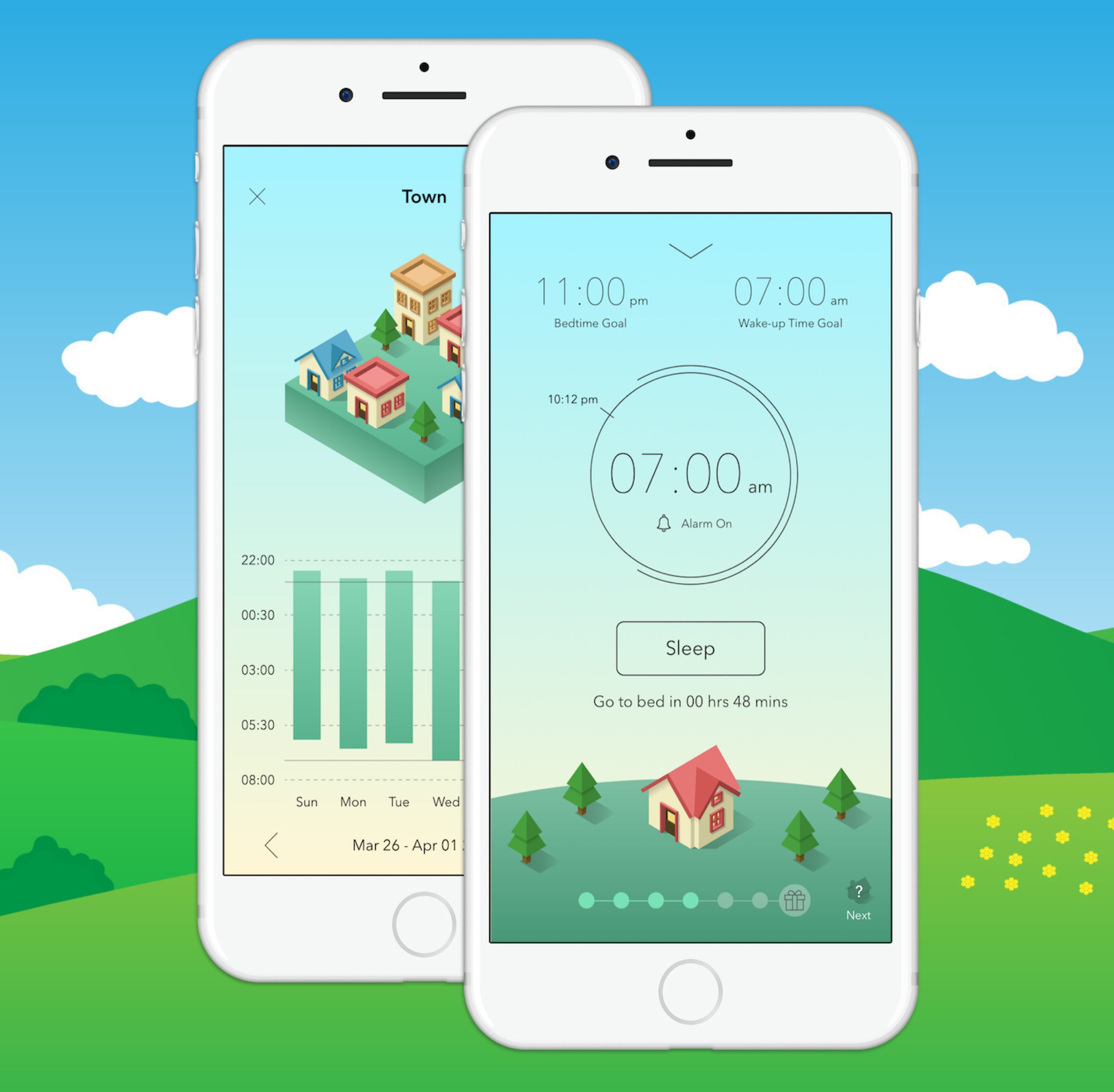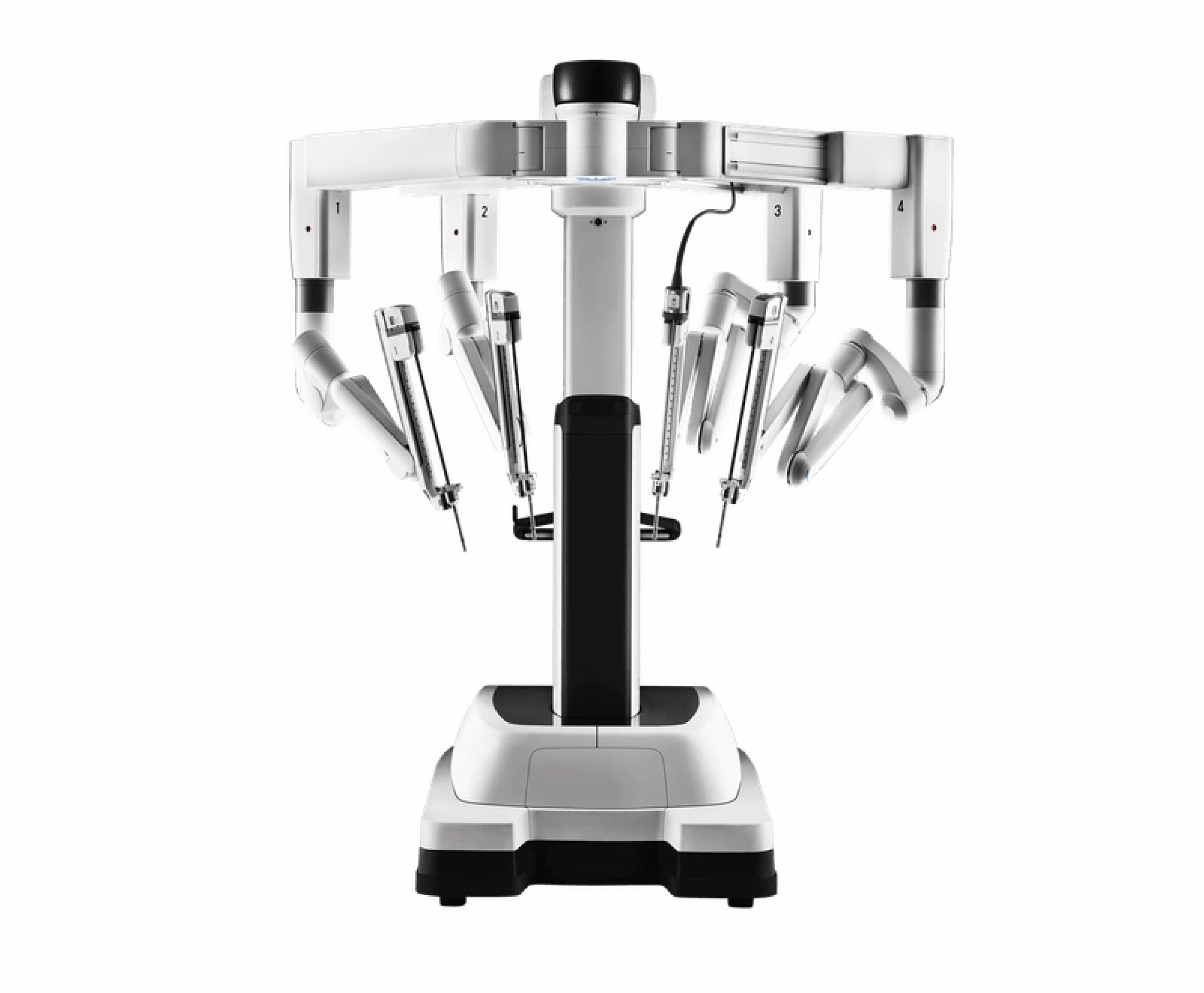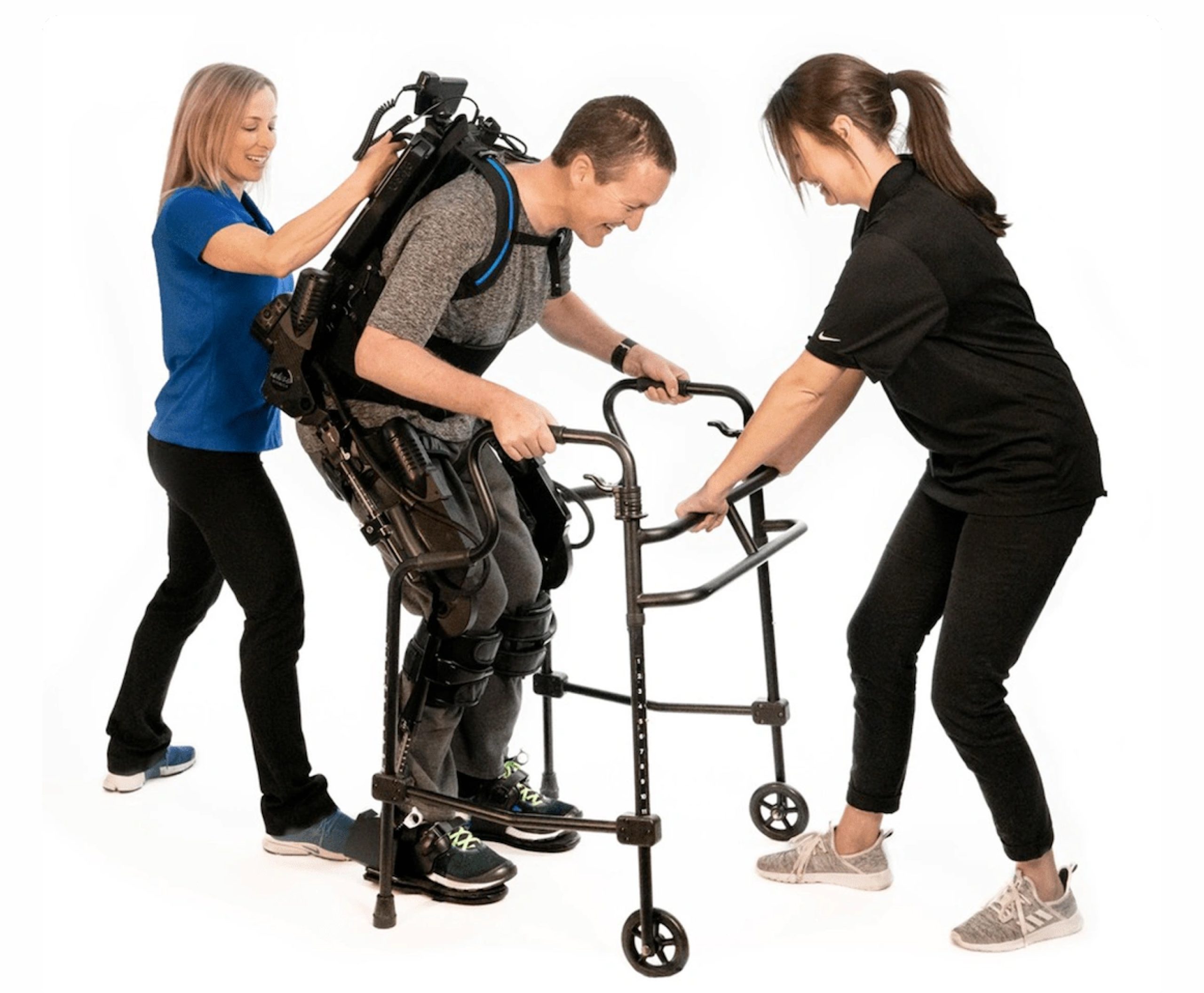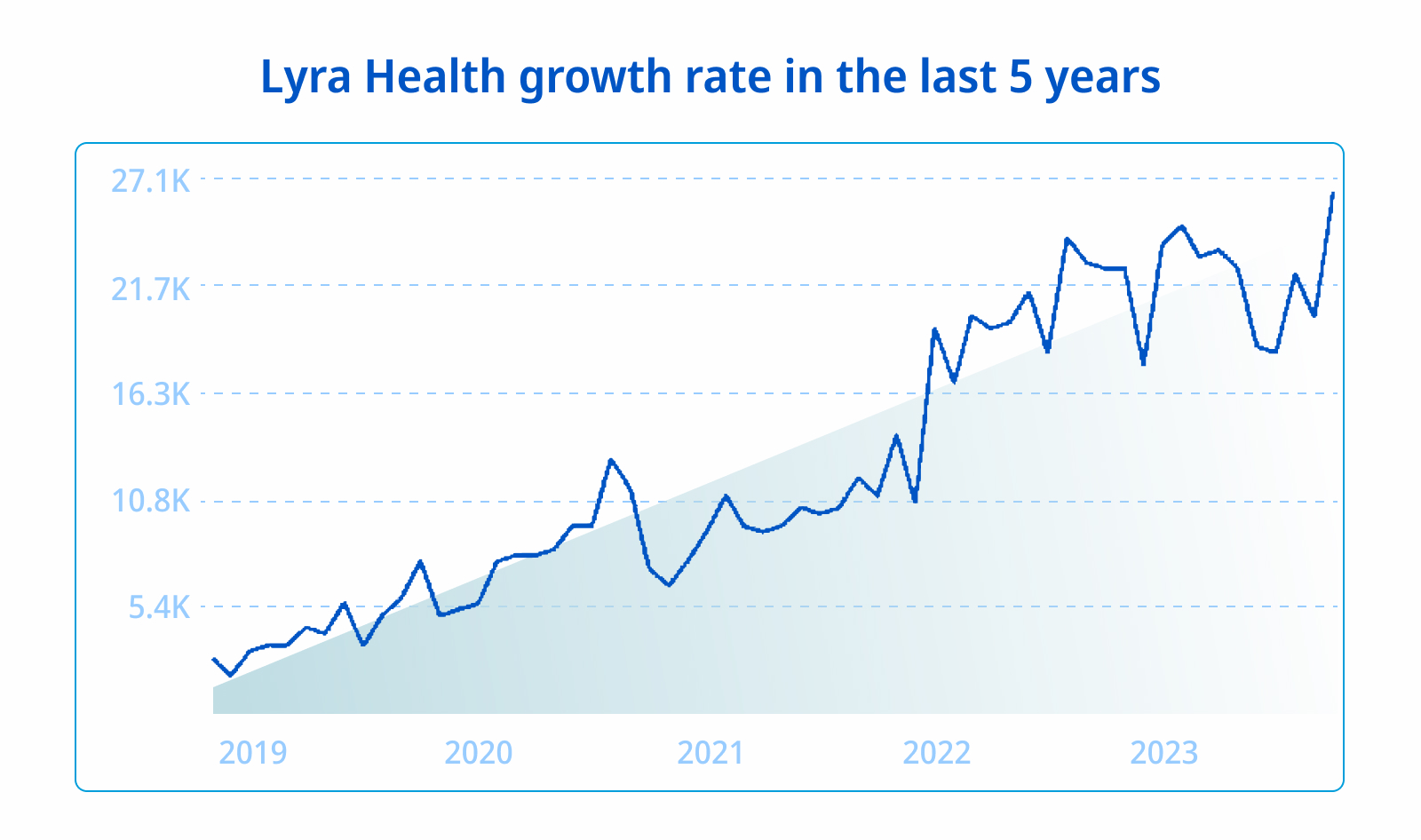As we approach 2024, the business landscape of the wellness industry is poised for significant evolution.
Opportunities for growth and transformation emerge in the dynamic intersection of traditional philosophies and modern innovations.
Greg Anderson’s insight, ‘Wellness is the complete integration of body, mind, and spirit,’ sets the tone for what lies ahead.
But how can businesses harness this integration to thrive in the coming year?
This blog unfolds the strategic health and wellness industry trends and predictions shaping the industry in 2024.
Table of Contents
Market Size of Wellness Industry
In 2022, the health and wellness market boasted a value of US$ 4.92 Trillion, and projections indicate a rise aiming for US$ 13.89 Trillion by 2032, Vision Research Reports said.
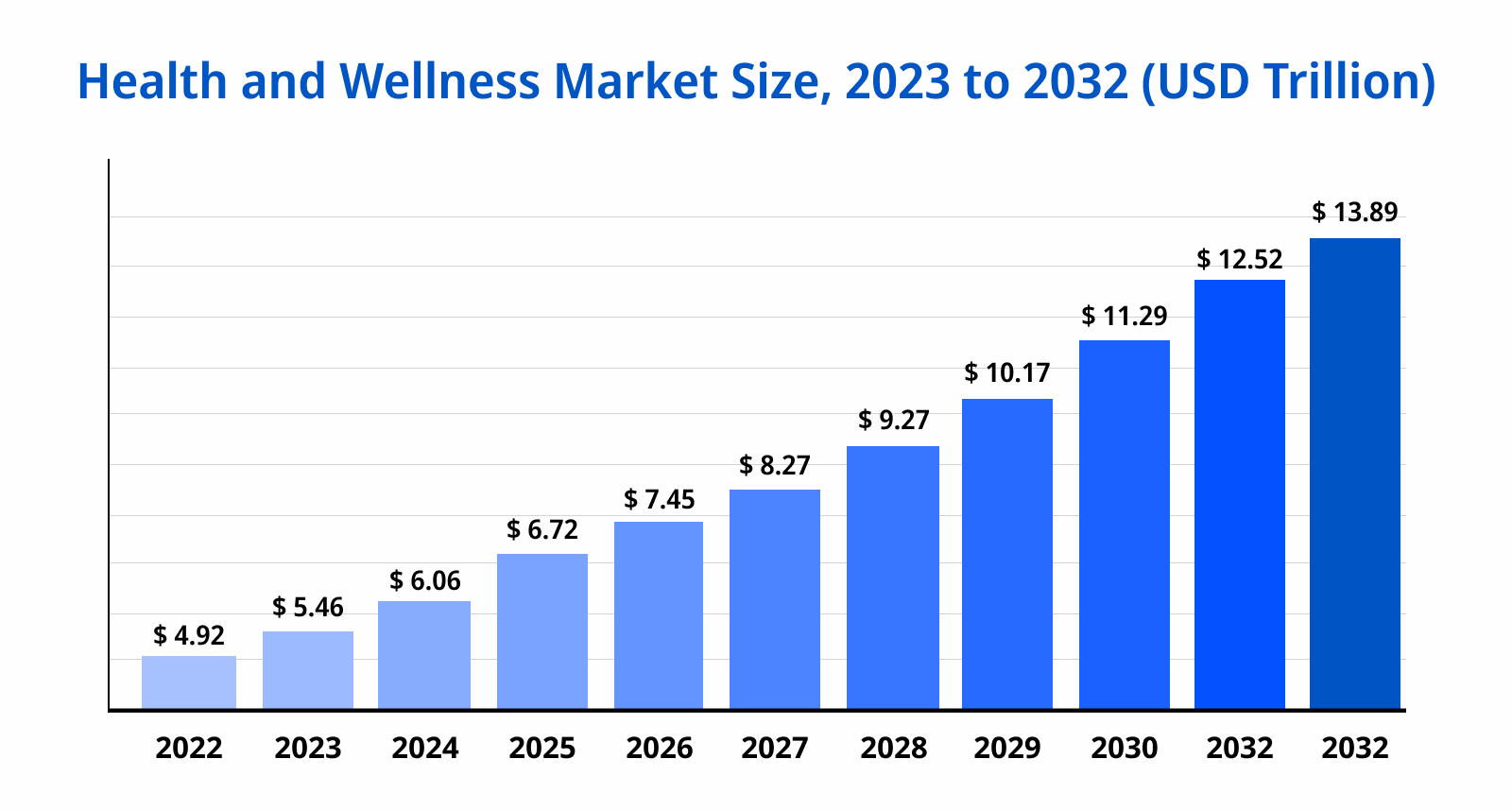
Health and wellness encompass various techniques, services, and products dedicated to maintaining individuals’ fitness, health, and overall well-being worldwide.
This includes various aspects, such as mental, social, and emotional well-being.
Wellness, in essence, signifies the quality of life, embracing mental and physical wellness, emotional balance, socio-economic well-being, fitness, and nutrition.
In the dynamic wellness landscape, keeping pace with the nutrition industry and wellness trends becomes integral for comprehensive health enhancement.
Driving Forces
The surge in cases of chronic lifestyle diseases globally serves as a primary driver for the growth of the health and wellness market.
Lifestyle-related ailments such as diabetes, blood pressure issues, asthma, arthritis, cancer, dementia, and stress-related disorders have seen a significant increase due to sedentary lifestyles and busy schedules.
Notably:
- The International Diabetes Federation (IDF) reports a rise in diabetes cases in North America, projecting an increase from 46 million in 2017 to an estimated 62 million by 2045.
- The World Health Organization (WHO) highlights the alarming prevalence of cancer globally, with one in five men and one in six women being diagnosed during their lifetime.
- Cardiovascular diseases (CVDs) emerge as a leading cause of global mortality, accounting for nearly 17.9 million deaths annually, which is approximately 31% of all global deaths, according to WHO.
- The Centers for Disease Control and Prevention (CDC) notes that 18.2 million adults in the U.S. have coronary artery disease (CAD), leading to two out of every ten deaths in adults under 65.
Get a 30% boost with our data-driven solutions.
Step into the Future: Top Health and Wellness Industry Trends for 2024
As we look towards 2024, the industry is poised for exciting shifts and innovations.
Here are the top wellness trends that businesses should keep a keen eye on:
1. Prioritizing Wellness: The Millennial Approach
Millennials significantly prioritize self-care, with a 200% increase in Google searches for “self-care” over the past five years.

Key Trends
- Growing Investment
Americans are dedicating more time and money to self-care, reflecting one of the booming health and wellness industry trends in habits, products, and services aimed at holistic well-being.
- Meditation Apps Boom
Meditation apps, exemplified by Calm, have seen remarkable success, with the top 10 apps generating an estimated $195 million in 2019.
Calm, founded in 2012, reached a valuation of $2 billion in 2018.
- Skincare Surge
Skincare sales have risen steadily by about 5% annually since 2014, witnessing a historic milestone in 2020 as skincare products outsold makeup for the first time.
Established brands like L’Oreal’s CeraVe and innovative startups like Goop and DRMTLGY are capitalizing on this trend.
- CBD Acceptance
Despite CBD products being legalized nationwide in the US only in 2018, they are now used by 28% of consumers. The growing adoption reflects the evolving trends in the wellness industry in the US.
The CBD product category is projected to reach $20 billion in sales by 2024.
- Focus on Sleep
Acknowledging the importance of sleep, there’s a rising interest in sleep-related solutions, including adopting sleep pods in workplaces and prioritizing sleep hygiene at home.
Apps like SleepTown and productivity-enhancing apps like Forest contribute to better sleep practices.
2. Intermittent Fasting: A Mainstream Eating Pattern
The global weight loss and obesity management market is poised to exceed $377.3 billion by 2026.
In 2020, 43% of Americans followed specific diets, with intermittent fasting emerging as the most popular eating pattern.
Key Trends
- Intermittent Fasting Dominance
Searches for “intermittent fasting” have grown by 279% over five years, making it the top dietary choice.
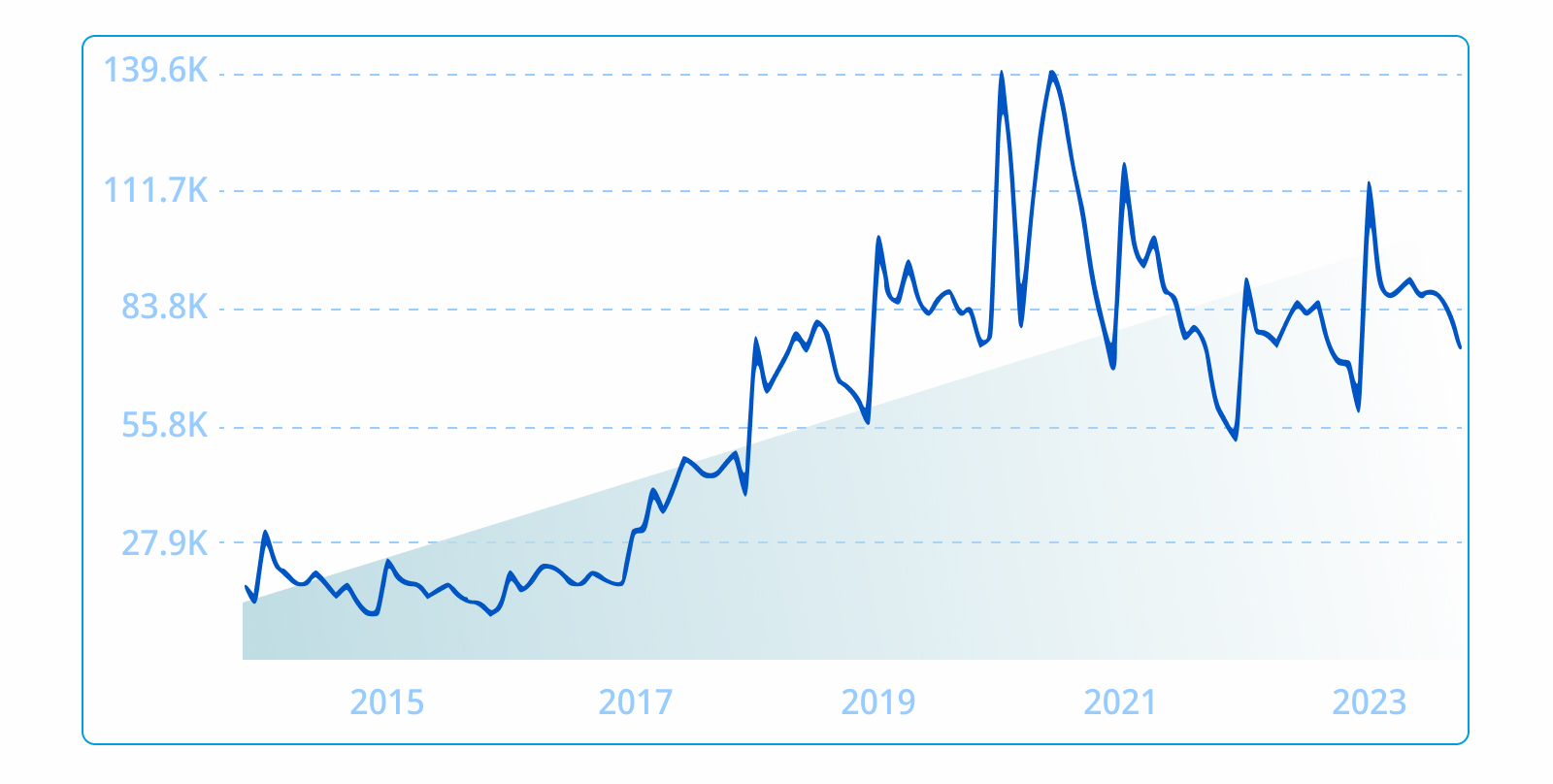
- Fasting Products and Apps
The popularity of intermittent fasting has given rise to fasting-related products, such as mobile apps like Zero and LIFE, which offer fasting timers, tips, and integration with social and fitness apps.
Fasting tea, fasting kits, and specialized diets complement the fasting trend.
3. Emergence of Medical Robotics
The global medical robotics market is projected to reach $24.23 billion by 2028, a substantial increase from $11.47 billion in 2023.
While robotic-assisted surgical equipment dominates the market, rehabilitation robots are expected to experience the fastest growth.
Key Trends
- Surgical Robotics
Industry leader Intuitive Surgical leads the market with its Da Vinci surgical robots. Surgical robots enhance precision in procedures and facilitate telesurgery.
- Rehabilitation Robotics
The rehabilitation robotics category is expected to grow from $530 million in 2018 to $2.6 billion in 2026.
Examples include the EksoNR exoskeleton for lower-body mobility and solutions from Cyberdyne.
- Diverse Applications
Beyond surgeries, robotics find applications in disinfection (XENEX robots), nanorobots for combating bacteria, and implantable bionic eyes.
4. Increased Focus on Mental Health
Mental health has transitioned to the forefront of societal conversations, particularly post-pandemic.
The evolving consumer preferences and the increasing focus on holistic well-being are driving significant trends in the wellness industry in the US.
State of Mental Health in America Report indicates that 19% of Americans live with a mental health condition, surpassing 47 million people, a 1.5 million increase from 2020.
Key Trends
- Widespread Impact
More than 30% of adults in the US report symptoms of anxiety or depression, a 29% increase compared to pre-pandemic levels.
Workplace focus on mental health has surged, with 84% of surveyed workplaces prioritizing mental health in 2020.
- Youth Mental Health
Children and teenagers also face increased mental health challenges, with 72% of American high school juniors and seniors reporting struggles during the pandemic.
Brightline and Lyra Health, in line with the growing health and wellness industry trends, aspire to meet the escalating demand for mental health support.
- Investor Interest
Investors have invested over $1 billion into mental health and wellness startups through the third quarter of 2020.
Successful startups include Brightline, raising $72 million in a Series B funding round, and Lyra Health, valued at $5.58 billion.
Let's connect virtually or ask for an estimate of your project.
5. AI in Healthcare: Strategies and Implementations
Artificial intelligence (AI) is increasingly integral in the healthcare sector, with a 456% growth in searches for “healthcare AI” over the last five years.
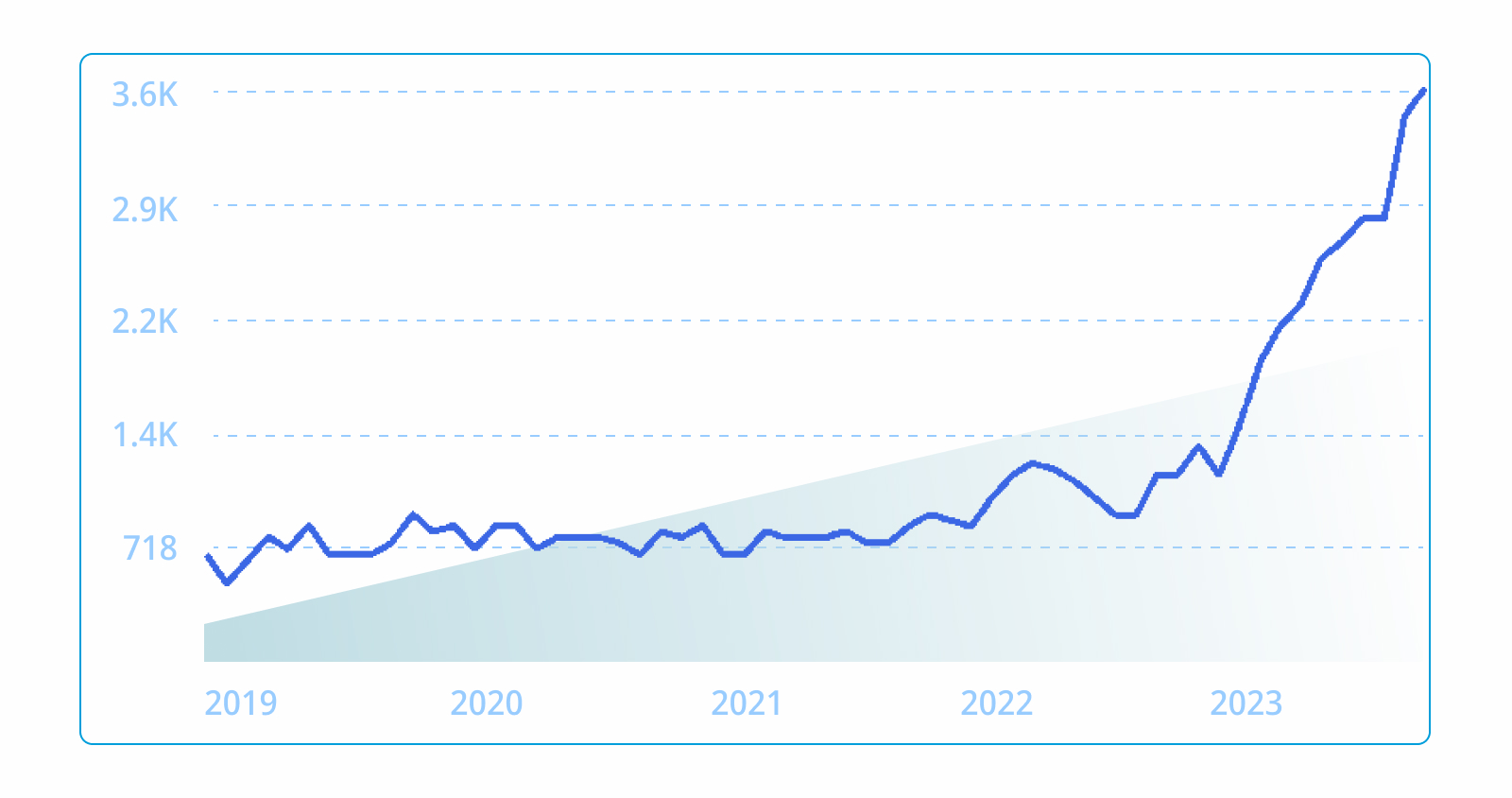
Key Trends
- AI Integration
AI’s presence in healthcare is expanding rapidly, with 95% of surveyed healthcare professionals actively seeking experienced staff in developing AI.
Nearly 60% of healthcare executives anticipate a return on AI investments within three years.
- Operational Impact
AI is making strides in direct patient care, as seen in Northwell Health’s transitions of care management program.
Early detection of health issues, exemplified by companies like Nines, showcases AI’s diagnostic capabilities.
- Diverse Applications
Beyond diagnostics, AI is applied in fields such as predicting COVID-19 infections using wearables and creating a healthcare map by companies like Komodo Health.
The global medical robotics market’s expected growth to $24.23 billion by 2028 indicates a broader integration of AI-driven technologies.
6. Gut Health Revolution: Mainstream Adoption of Probiotics
“Gut health” has become a prevailing focus due to the high prevalence of gastrointestinal symptoms in the United States.

Key Trends:
- Market Growth
The probiotic market is projected to have a CAGR of 6.7% from 2020 to 2027, reaching $76.7 billion by 2027.
Prebiotics, acting as food for good gut bacteria, are expected to grow 12.7% over the next eight years.
- Customized Solutions
Startups like Sun Genomics analyze stool samples to create personalized probiotic blends.
Zbiotics is genetically engineering probiotics to alleviate hangovers, showcasing innovative approaches in this market.
- Expansion to Pets
The trend extends beyond humans, with companies like Animal Biome offering pet gut health products, signaling the broadening scope of gut health awareness.
7. Wearable Health Tech on the Rise: Expanding Usage
The global market for wearable medical devices, valued at $26.8 billion in 2022, is anticipated to grow at a CAGR of 25.7% through 2030.
Wearables, from fitness trackers to devices predicting COVID-19 infections, are crucial in personal health monitoring.
Key Trends
- COVID-19 Prediction
Wearables like the Oura’s smart ring have demonstrated the ability to predict COVID-19 infections three days in advance with 90% accuracy.
During the 2020 season, notable leagues like the WNBA and NBA strategically embraced wearables to monitor player health, aligning with the latest health and wellness industry trends.
- Membership Models
Wearables like Whoop operate on membership models, offering fitness-tracking straps for free but requiring users to subscribe for data access.
The wearables market is diverse, encompassing fitness trackers, sleep trackers, and medical diagnostic devices.
- Innovation Continues
Continuous innovation in wearables includes predicting COVID-19 infections, sleep tracking, and fitness monitoring.
The West Virginia University Rockefeller Neuroscience Institute’s collaboration with Oura Health is a notable example of harnessing wearables for health prediction.
Climbing the Ladder: Strategies for Startups
Startups play a crucial role in driving innovation and shaping the future.
To navigate the complexities and seize opportunities in 2024, startups need effective strategies beyond survival—a roadmap for growth and success.
1. Define a Niche
- Identify a specific niche within the wellness sector that aligns with your vision.
- For instance, consider targeting personalized wellness solutions for niche demographics, such as wellness programs tailored for remote workers or specialized fitness plans for busy professionals.
2. Leverage Technology Smartly
- Embrace digital platforms to reach a broader audience.
- Explore partnerships with health-focused apps or integrate innovative technologies like virtual reality (VR) for immersive wellness experiences.
3. Build Community Engagement
- Foster a sense of community around your wellness brand.
- Engage with your audience through social media, host virtual events, and encourage user-generated content.
- For example, organize virtual wellness challenges to build a community of like-minded individuals.
4. Invest in Employee Well-being
- Recognize the importance of employee well-being within your startup.
- Consider implementing flexible work arrangements, mental health support programs, and wellness initiatives in the workplace to enhance employee satisfaction and productivity.
5. Emphasize Sustainability
- Align your wellness offerings with sustainable practices.
- Consumers are increasingly conscious of the environmental impact, so incorporating eco-friendly practices in product packaging or promoting sustainable wellness practices can be a market differentiator.
6. Data-Driven Decision Making
- Leverage data analytics to understand customer preferences and market trends.
- Analyze user behavior, gather feedback, and adapt your wellness strategies based on actionable insights.
For instance, if data indicates a rising interest in a specific wellness trend, tailor your offerings accordingly.
7. Strategic Partnerships
- Collaborate with other wellness brands or complementary industries.
- Strategic partnerships can open new avenues for growth, whether co-hosting events, cross-promotions, or bundling products/services for a comprehensive wellness package.
8. Adaptability and Innovation
- Stay agile and be open to adapting your strategies based on industry shifts.
- Innovate your offerings to stay ahead of the curve.
For example, if there’s a surge in interest in a particular wellness practice, be ready to incorporate it into your portfolio.
Navigating Challenges
Businesses face various challenges that require strategic navigation. Addressing these challenges is pivotal for sustained growth and success.

1. Changing Consumer Preferences
Challenge: Consumer preferences in the wellness industry are ever-evolving.
Strategy: Conduct regular market research to understand shifting trends. Flexibility in adapting to changing demands is key.
2. Digital Transformation Struggles
Challenge: Transitioning to digital platforms can be daunting for traditional wellness businesses.
Strategy: Invest in user-friendly interfaces and digital marketing. Provide online resources for easy accessibility.
3. Competitive Market Saturation
Challenge: The market is becoming saturated with numerous wellness options.
Strategy: Differentiate through unique offerings, personalized services, and compelling brand positioning.
4. Regulatory Compliance
Challenge: Adhering to diverse and evolving regulations can be complex.
Strategy: Stay informed about industry regulations. Establish robust internal compliance protocols to ensure legal adherence.
5. Technology Integration
Challenge: Integrating advanced technologies seamlessly into wellness services.
Strategy: Invest in employee training programs. Collaborate with tech experts to streamline technology adoption.
6. Data Security Concerns
Challenge: Safeguarding sensitive client information is a top priority.
Strategy: Implement robust cybersecurity measures. Educate staff on data protection practices to mitigate risks.
7. Sustainability Practices
Challenge: Meeting consumer expectations for sustainable business practices.
Strategy: Adopt eco-friendly initiatives, promote transparency in sourcing, and communicate sustainable efforts to build consumer trust.
Experience ROI potential with our agile software solutions.
PixelCrayons – Your Roadmap to Success
PixelCrayons stands at the intersection of technology and wellness, crafting solutions that align with the emerging health and wellness industry trends in 2024.
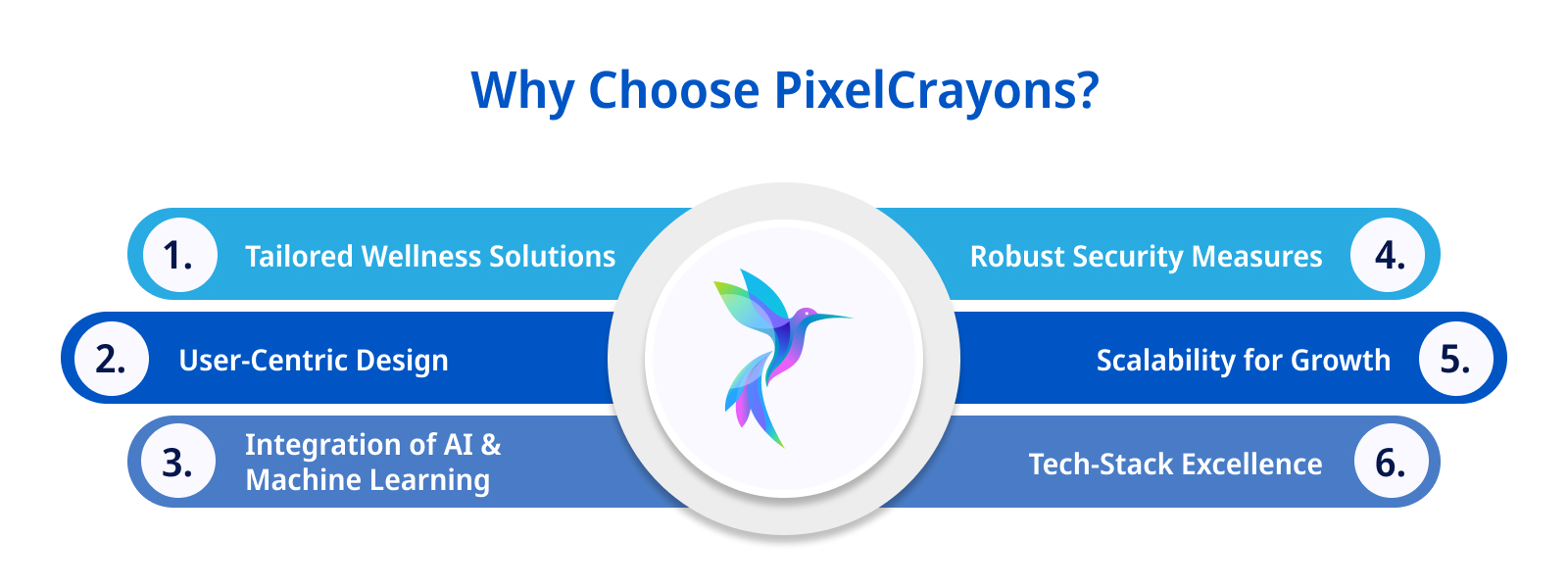
-
Tailored Wellness Solutions
PixelCrayons understands that one size doesn’t fit all. Our experts work closely with you to tailor wellness applications that meet the unique needs of your business and resonate with your audience.
-
User-Centric Design
Our team ensures that the wellness apps we develop prioritize user experience. Intuitive interfaces, seamless navigation, and engaging designs enhance user satisfaction and retention.
-
Integration of AI and Machine Learning
Keeping abreast of the rise in AI, PixelCrayons integrates intelligent features into wellness apps. From personalized recommendations to predictive analytics, our AI-powered solutions enhance user engagement.
-
Robust Security Measures
Security is paramount in the wellness industry. PixelCrayons implement robust security measures, safeguarding sensitive user data and ensuring compliance with industry regulations.
-
Scalability for Growth
Wellness businesses need solutions that grow with them. PixelCrayons develops scalable applications, allowing your business to expand without compromising performance.
-
Tech-Stack Excellence
PixelCrayons leverages a state-of-the-art tech stack, including but not limited to:
- Front-end: React Native, Flutter
- Back-end: Node.js, Django
- Database: MongoDB, MySQL
- Cloud: AWS, Azure
- AI/ML: TensorFlow, PyTorch
Conclusion
The synthesis of age-old principles and cutting-edge innovations allows businesses to redefine their market presence.
Embracing these health and wellness industry trends isn’t just about staying relevant but pioneering a transformative journey.
Engaging with leading healthcare software development services to harness advanced tech stacks can propel you ahead of your competitors.
In a landscape where well-being and business intertwine, success is measured in profits and the positive impact on individuals and communities.
As we enter this future, businesses strategically integrating these trends will thrive and contribute to a more holistic and prosperous society.
Accelerate business expansion – Connect for tailored software development!


